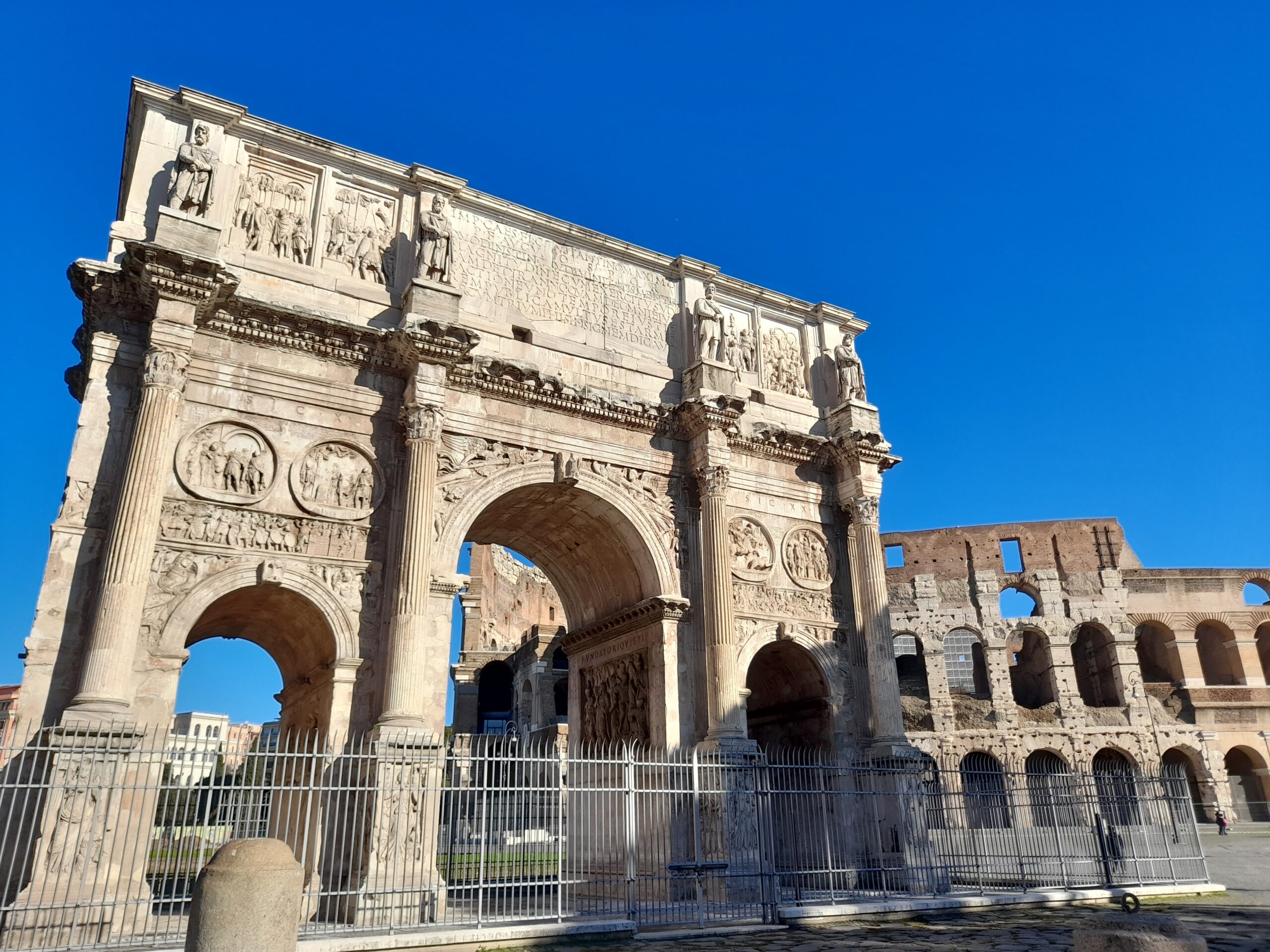Rome is world-famous for monumental fountains like Trevi or Piazza Navona, but the Eternal City also hides lesser-known treasures — discover them with Kirba Tours. Scattered across charming streets and quiet corners, you’ll find fountains that combine artistry, history, and symbolism. In this article, we’ll guide you to discover the most unusual fountains in Rome, which you can admire on one of our comfortable golf cart tours.
The Mascherone Fountain on Via Giulia
Tucked away near Palazzo Farnese, this 17th-century fountain was designed by Girolamo Rainaldi. Its centerpiece is the striking ancient mask (“mascherone”) pouring water into a granite basin. According to tradition, during the celebrations of the Farnese family, the fountain would even flow with wine instead of water, delighting guests. Originally placed in a small square that once hosted open-air performances, the fountain was both a functional water source and a lively gathering spot.
The Fountain of the Bees
Created in 1644 by Gian Lorenzo Bernini, the Fountain of the Bees was completed just a few months after his famous Triton Fountain, serving as a smaller but symbolic companion piece. Bernini enriched the design with three bees, the emblem of the powerful Barberini family, as a tribute to Pope Urban VIII.
The fountain originally stood at the corner of Palazzo Soderini and had a very practical purpose: it provided fresh water for horses that stopped there to rest and drink. However, its location caused traffic problems, so it was eventually dismantled. Many pieces were lost in storage, and when the city decided to reconstruct it, a new version—with some modifications—was commissioned from sculptor Adolfo Apolloni.
Today, the fountain you see in Piazza Barberini, between Via Vittorio Veneto and the square, is this later reconstruction. Its design is charmingly simple yet elegant: a large open seashell bearing a Latin inscription by Pope Urban VIII, and at its base, three finely carved bees.
The Fountain of Books
Located in Via degli Staderari, between the Pantheon and Piazza Navona, this fountain was designed by Pietro Lombardi in 1927. It symbolizes the area’s connection with the historic University of La Sapienza. The fountain features a stag’s head—the emblem of the Sant’Eustachio district—alongside four carved books from which water flows, representing knowledge endlessly pouring forth.
Lombardi’s Fountains Across Rome
In the 1920s, architect Pietro Lombardi designed a series of small fountains to celebrate the traditions of Rome’s historic neighborhoods (rioni). Each fountain is unique, reflecting the identity of the district it represents:
- The Amphora Fountain in Testaccio recalls the nearby Monte dei Cocci, the artificial hill made of millions of broken amphorae left from Roman times.
- The Rudder Fountain in Ripa Grande highlights the area’s close link to the Tiber River and its bustling river port, once vital for trade and transport.
- The Barrel Fountain in Trastevere pays homage to the neighborhood’s lively taverns and wine trade, symbols of Trastevere’s social life.
- The Pinecone Fountain in Piazza San Marco echoes the colossal bronze pinecone that once adorned the Baths of Agrippa and is now preserved in the Vatican.
- The Fountain of the Arts on Via Margutta celebrates the street’s tradition as an artists’ quarter, decorated with brushes, easels, and theatrical masks.
- The Cannonball Fountain in Borgo recalls the artillery history of Castel Sant’Angelo, once a papal fortress.
- The Papal Tiaras Fountain, also in Borgo, symbolizes papal authority, decorated with the triple crown of the Popes.
Although modest in size, these fountains form a hidden trail across Rome, each telling a story about the neighborhood it represents. Together, they reveal the daily life, trades, and culture that shaped the Eternal City in the 20th century.
The Fontanina del Cane
Along Via Vittorio Veneto, in the Ludovisi district, stands a small but delightful curiosity: the Fontanina del Cane. Built in 1940 at the request of a local barman known as Charlie, it was created to provide fresh water for his two large dogs and for other animals passing by. The tiny niche is decorated with the inscription ABC—the nickname of Charlie’s bar—and a bas-relief of a dog, making it one of the very few fountains in Rome designed specifically for animals.
Discover Rome Beyond the Icons
Rome’s fountains are not only works of art but also living witnesses to the city’s history and traditions. Exploring them means experiencing Rome from a fresh perspective, away from the most crowded tourist routes.
How many of them have you spotted?
👉 Hop on one of our golf cart tours to discover these unusual fountains and many other hidden gems of the Eternal City.





